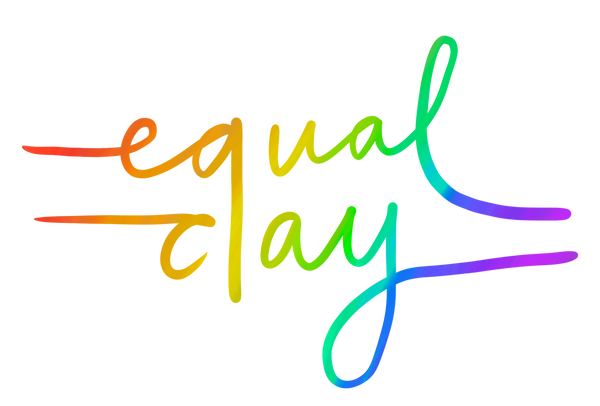This is the second post about the making of my wall installation regarding Apple and the EEOC. To read the whole series from the beginning, start with It's Raining Men.
When we talk about pay transparency, we are really talking about changing compensation details from being hard to discern, to having clear contours. We need to take in their size and shape, to see where the money starts and where it stops.
Hanging 260 clay drops on a wall would tangibly illustrate the magnitude of the pay gap. But that alone wouldn't capture the richness in my male colleagues' lives that resulted from their much higher pay. As that money refracted and reflected, dispersed and disbursed through their lives, it revealed a wide spectrum of options, experiences, and assets within their reach. To show this, I'd need color.
It can be tempting to write off vibrant color as whimsical, but color is a serious business tool. Apple introduced its brightly striped logo in 1977 to help promote its new color screens and appeal to a wider consumer audience. That's how I found myself, as a child of the 80s, writing my first Logo and BASIC programs on an Apple IIc while adults encouraged me toward the jobs of the future.

To this day, the candy coloring of computers and phones, silicone cases and watch bands, all testify to the continuing relevance of color to the company's bottom line. I initially thought about using only the original six spot colors—the colors an Apple employee once supposedly told Steve Jobs he would bleed if cut—and which four decades later still appeared on our business cards.

I ultimately chose to use colors that reflected my perspective. My male teammates' lives weren't constrained to a limited palette of choices. To the contrary, their options were free and expansive, the whole rainbow.
Clay naturally comes in neutral, earthy colors—it's literally dug out of the ground—and you can't just go to the store and buy it pre-colored like paints. Potters usually add color by coating a form’s surface with an underglaze or glaze. These may require many coats for opaque coverage, or preclude applying the color to all sides of the piece without fusing it to the kiln during firing.
So getting the drops completely saturated with color, even as they twisted and swayed, was my first challenge. I decided that my best option was to stain the clay by mixing colorants into a white clay body. The drops then wouldn't just be painted colors, they would be the colors.
But if I wanted colored clay, I'd have to make my own. To do that, I'd need to gather up some knowledge, tools, and materials—which have a financial cost to acquire, and a time cost to execute. What did I get and where did I source it? I'll tell you in the next post.
